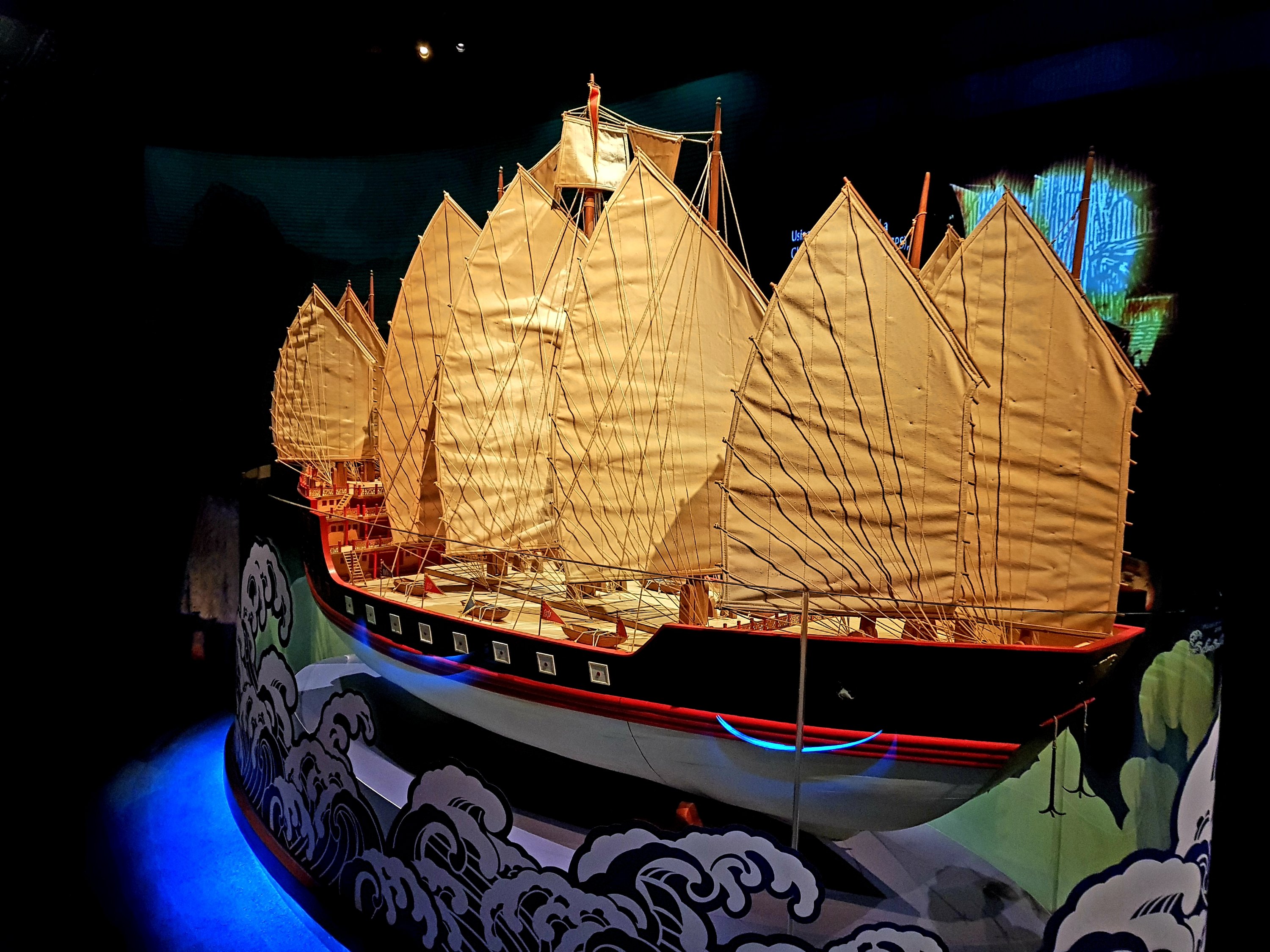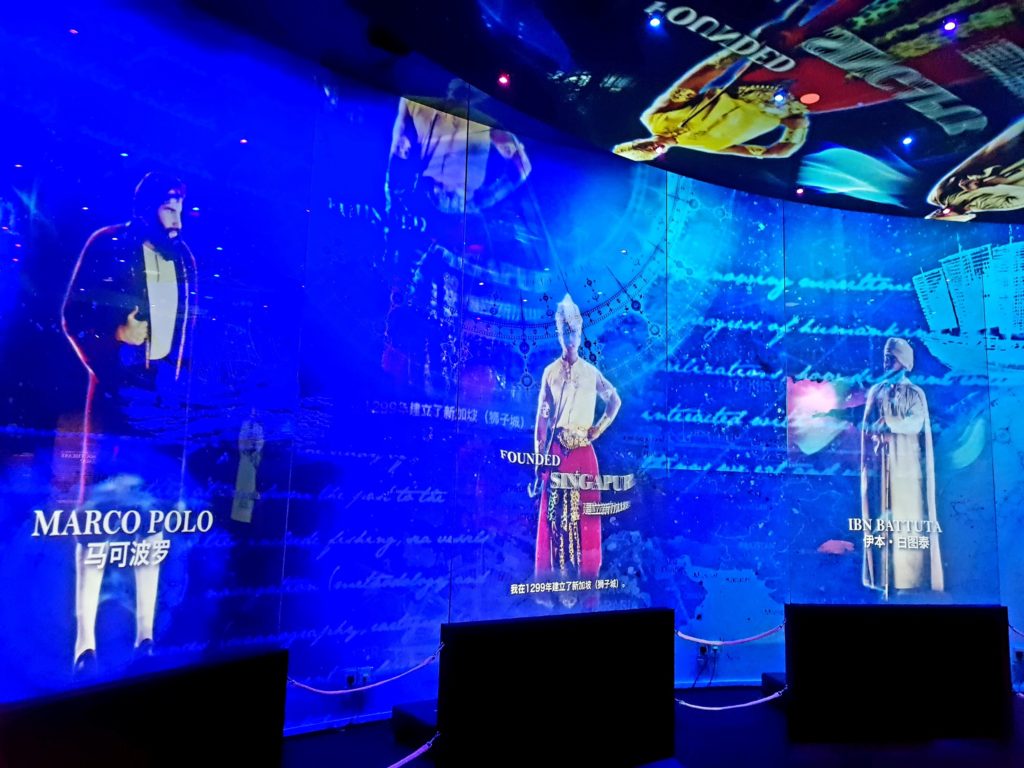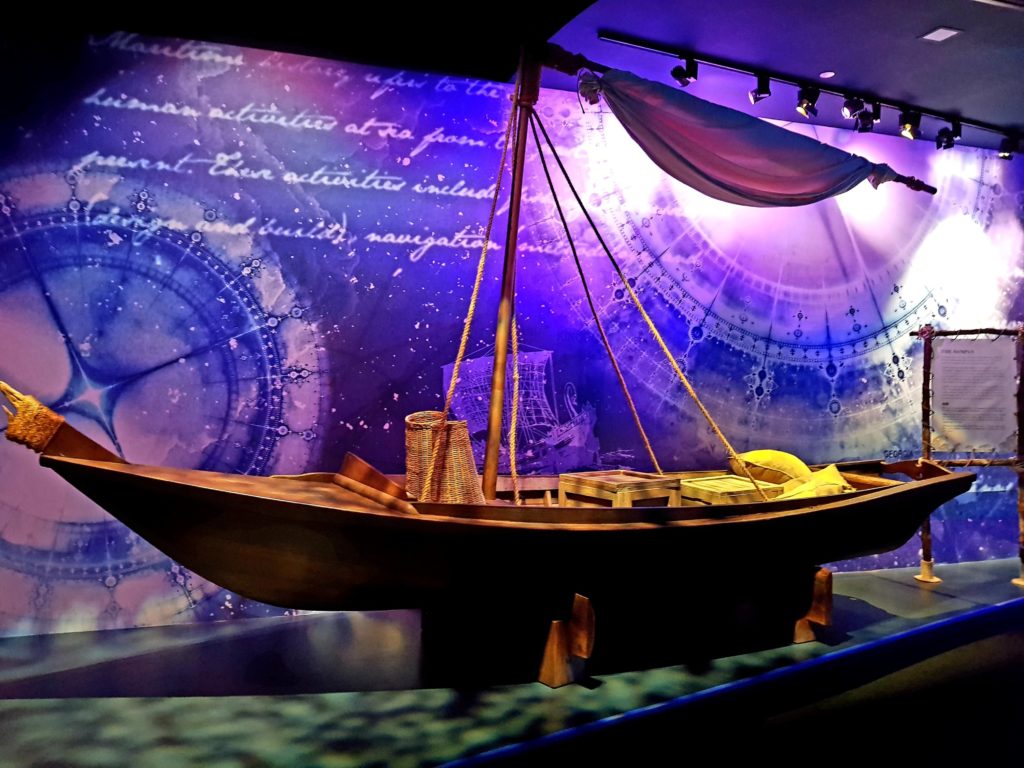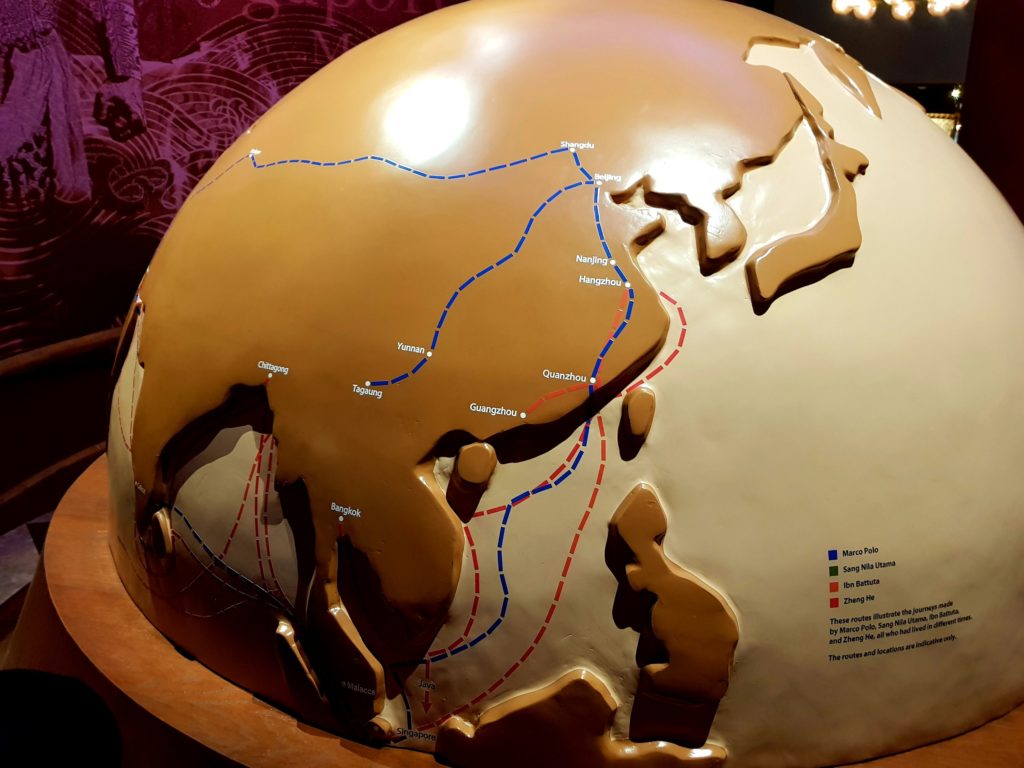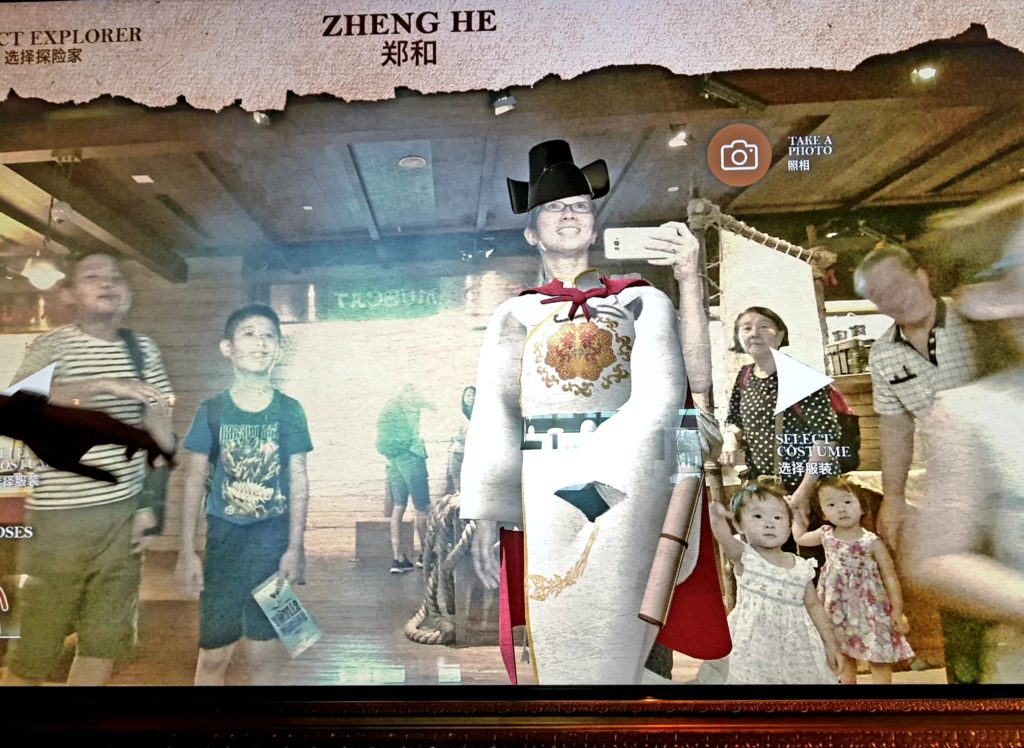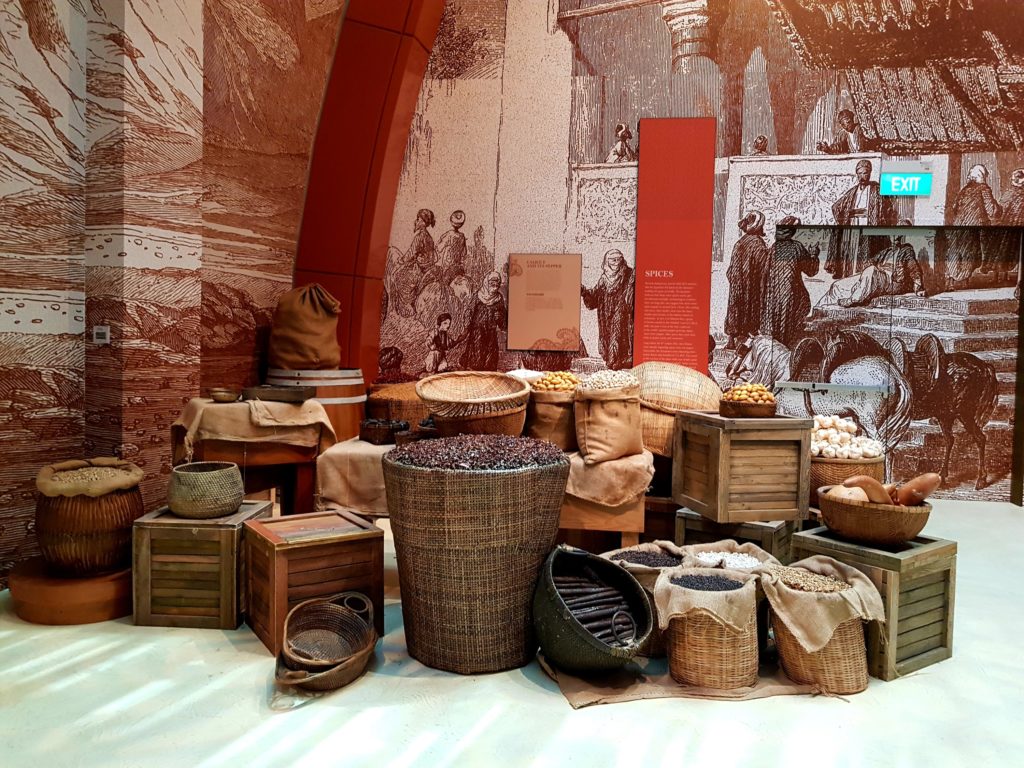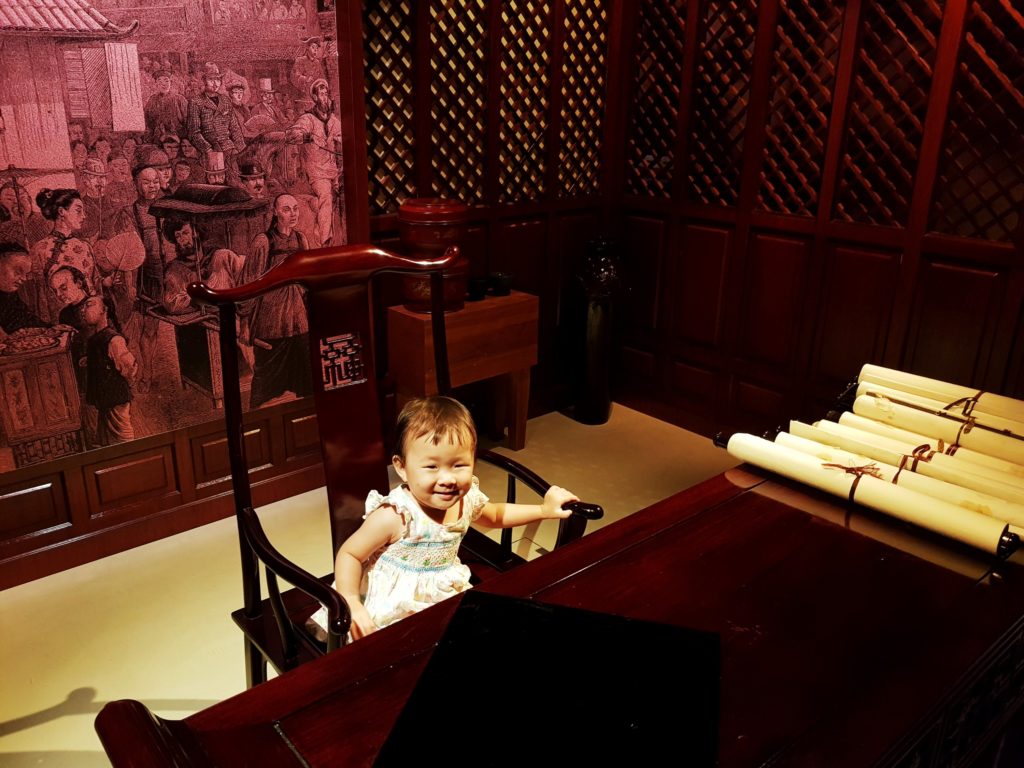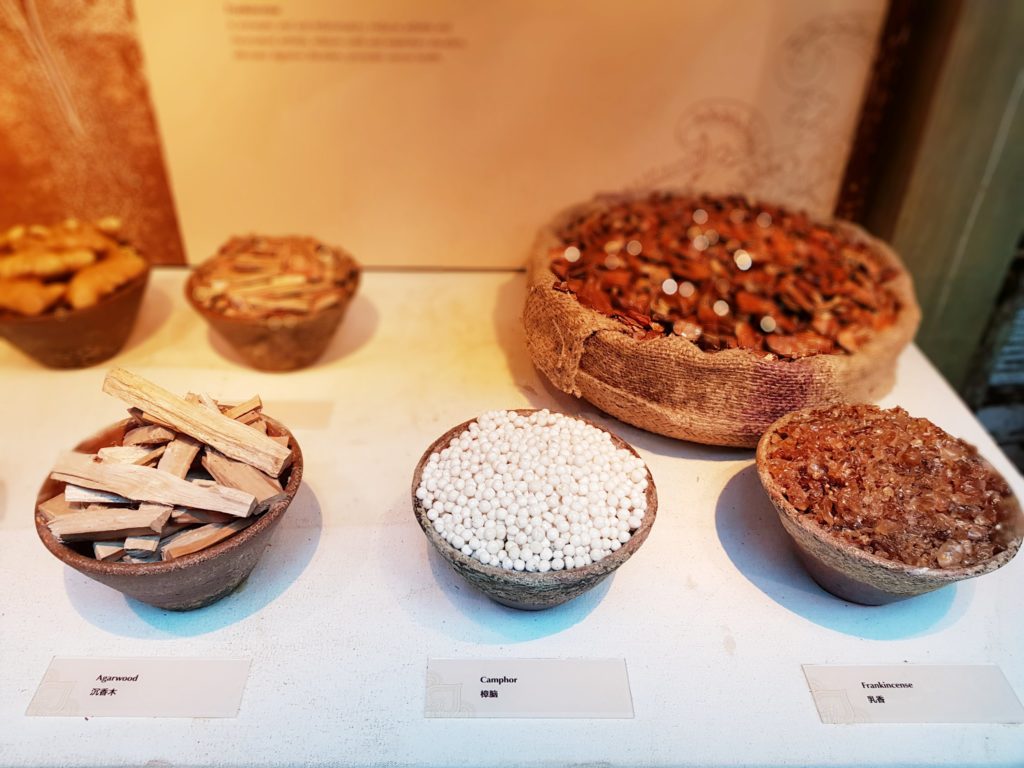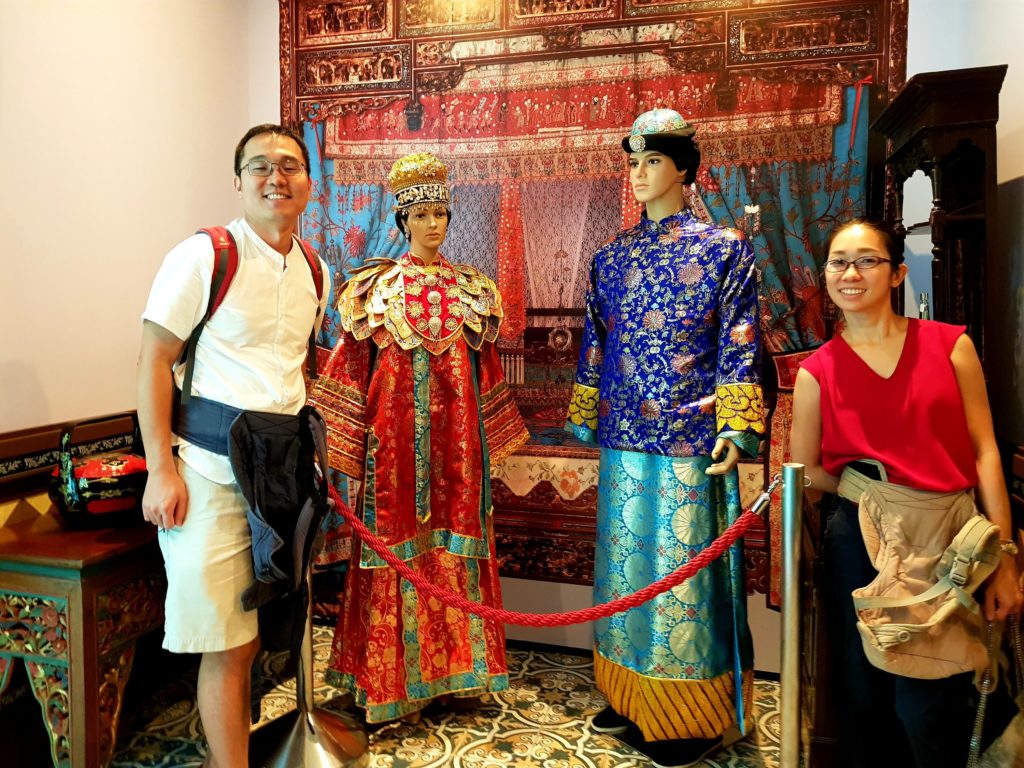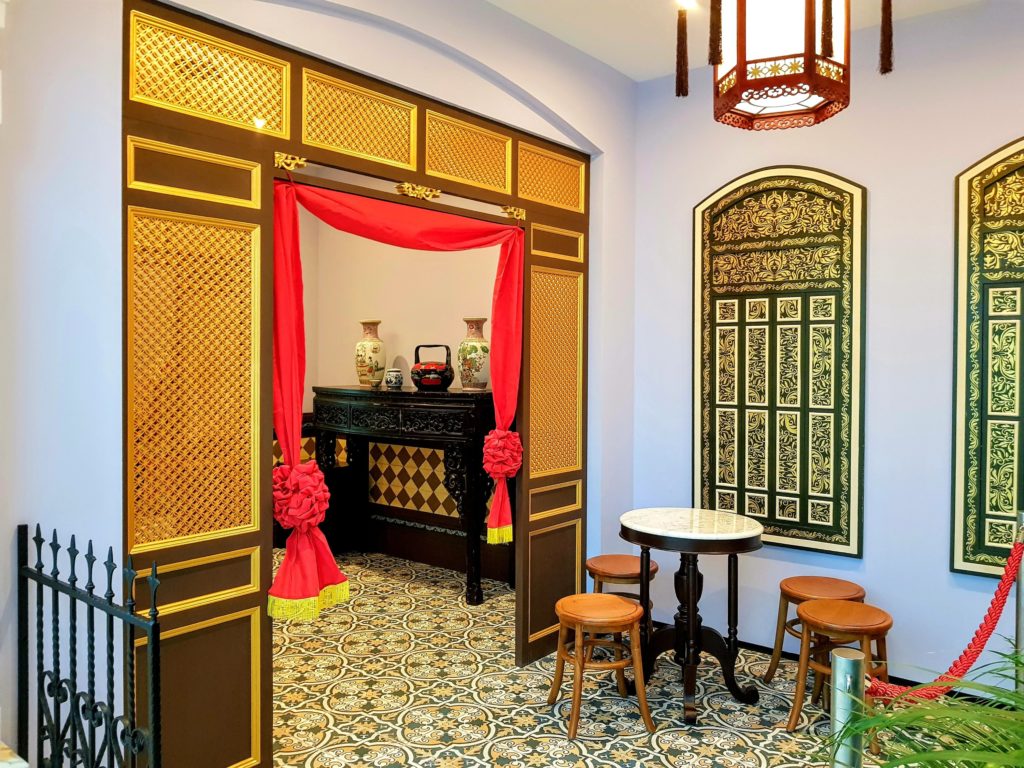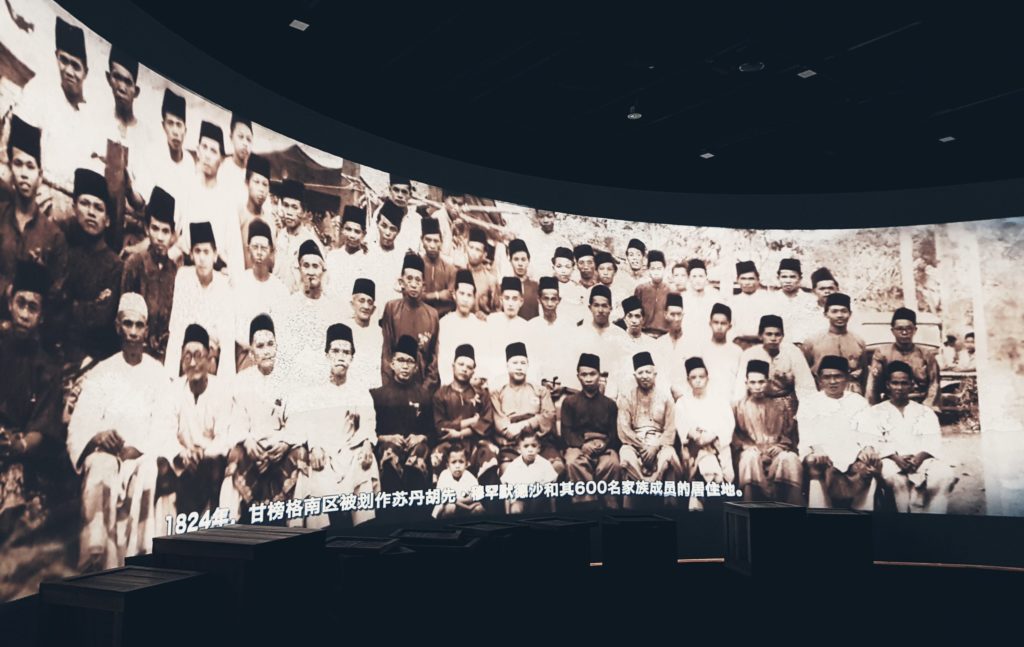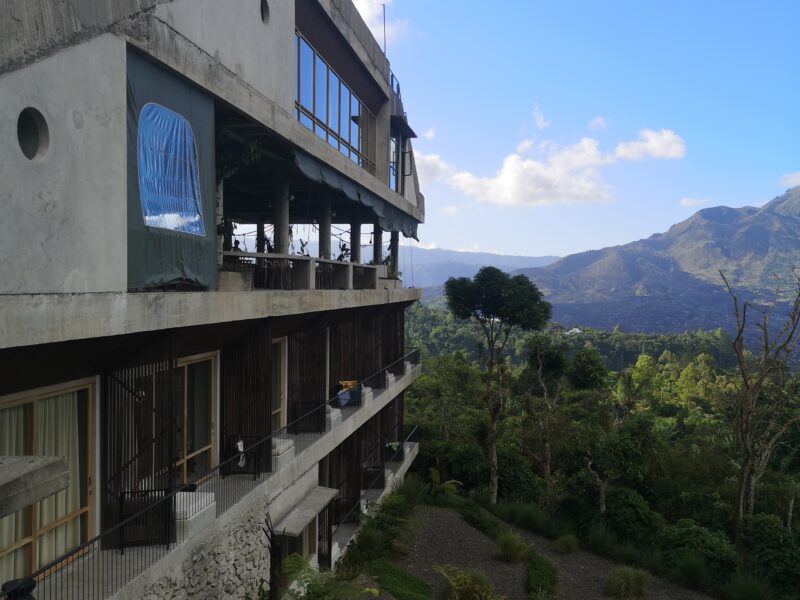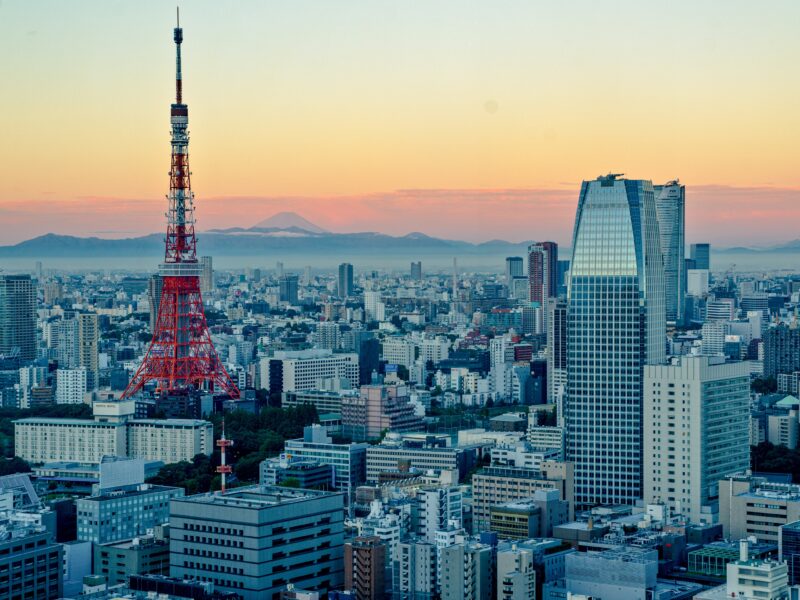The Maritime Experiential Museum is located right beside the S.E.A Aquarium. I was already impressed by the gigantic holographic screen located near the entrance, which presents four world-famous seafarers – Marco Polo, Sang Nila Utama, Ibn Battuta and Zheng He. Do you know that they had all stepped into Singapore before?
Maritime Experiential Museum
Reopened on 29 Dec 2017, the museum focuses entirely on the history of the Maritime Silk Roads, which consisted of routes on the Indian Ocean and South China Sea. In the peak of the Indian Ocean routes, vessels went to far-flung places such as Italy and Southern Africa.
The routes below were taken by the four famous voyagers, Marco Polo, Sang Nila Utama, Ibn Battuta and Zheng He, and they all stopped by Singapore.
Do you know that Zheng He travelled through the Singapore Straits several times? It was believed that Long Ya Men, a rock outcrop located just offshore from Labrador Park, was used as a navigational marker for him. The rock was however blown up by the British in 1848 to widen the Keppel Straits.
Find DYI Trail Guide to Long Ya Men in Labrador Park here.
The interactive screen as shown below detects the presence of two or three people at the same time and dressed us in virtual clothing to play the role of an explorer.
This is the Javanese Jong, a large type of trading vessel used in the late 13th century. The Jongs were built near teak forests on the coast of North Java. There were no iron nails used in constructing the vessel. Instead, the shipbuilders inserted wooden pegs into the seams of the planks. These vessels carried cargos from Southeast Asia to China, and even as far as Maldives, Oman and Madagascar.
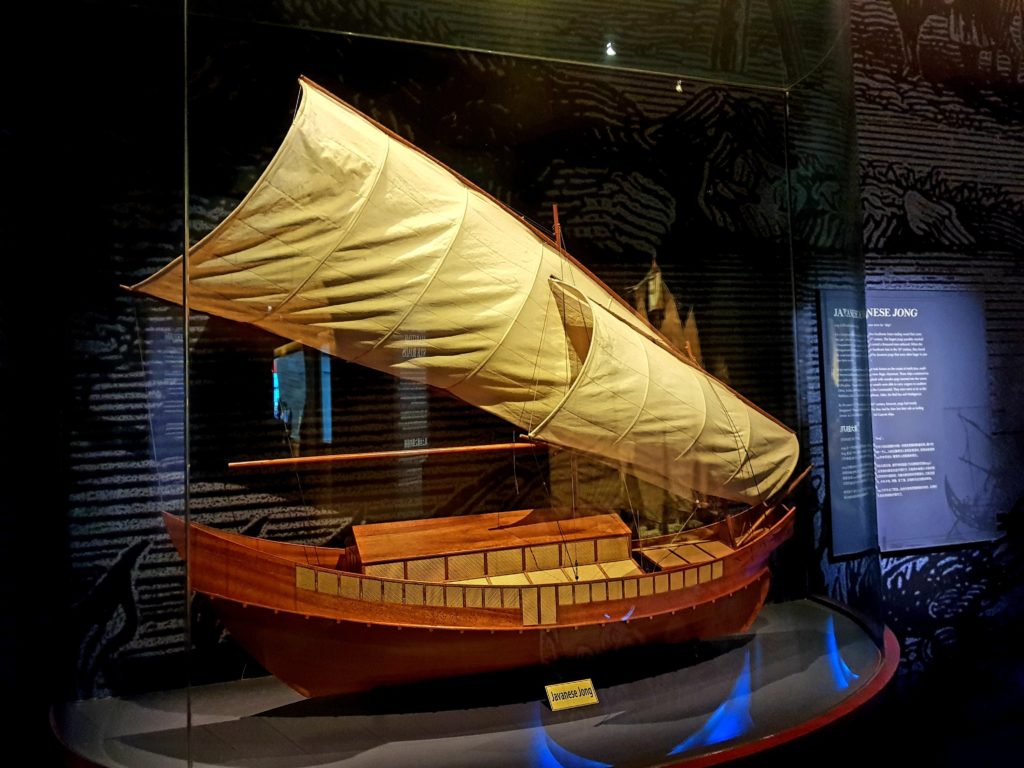
Ports of Call
We walked through four ports of call, namely in Quanzhou, Oman, Calicut and Malacca. These were the dynamic ports that linked China with the Middle East and Europe. Each space displays a variety of exhibits to awake your senses, to see, touch and smell the range of goods traded in the olden days.
Find commonly traded items such as nutmeg, perfumes, pottery and textiles in each of the port of calls.
My favourite frankincense was already well appreciated by many over hundreds of years ago.
In this mini movie theatre, we learned how Singapore became the thriving port metropolis, and how its strategic trading position in the Maritime Silk Route spurred Singapore’s trade growth. Through beautifully preserved archive images and videos, we enjoyed a vivid explanation of how the Singapore port has played a significant role in the country’s development.
My Verdict of the Tour.
It was a fantastic multi-sensory and interactive experience that deepened my knowledge of the Singapore history. I would be great if I could take my time to leisurely take in the explanations of the artefacts.
As we brought five kids (including eleven-year-old nephew), we had to quickly browse through a number of the sections. The children had no patience to linger around every corner of the museum with me. But it was still an eye-opening tour for my 8-year-old and 7-year-old. Even though they could not appreciate the trade benefits of the Maritime Silk Route, they can now visualize how Singapore and the other ports of call looked like in the early years.
Get your tickets from Klook here.
Don’t want to miss my posts? Subscribe here to get updates from me.
You may also be interested in the following posts:
A trip to the amazing Resorts World S.E.A. Aquarium, Singapore
Forest Ramble Playground in Jurong Lake Garden – An Afternoon of Fun!
NOM – No Other Meaning – Review
Admiralty Park Playground – It’s Gigantic!
Art Science Museum – Future World: Where Art Meet Science
